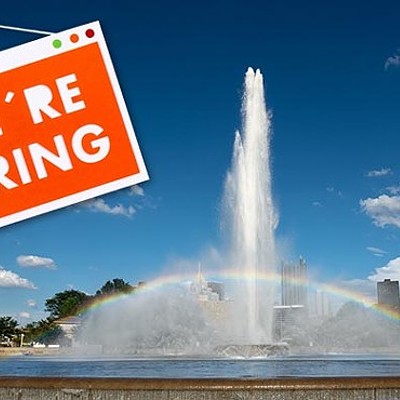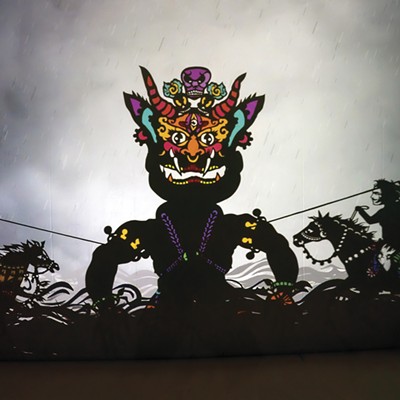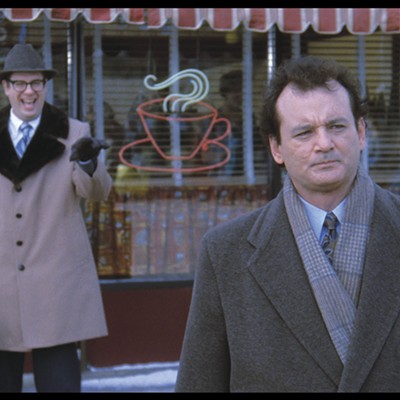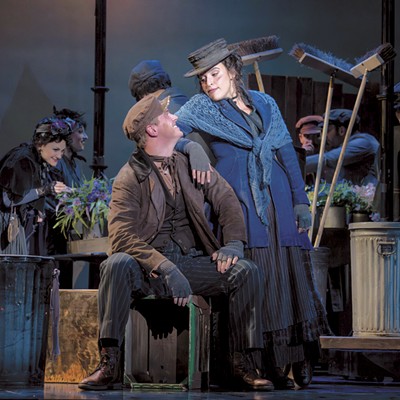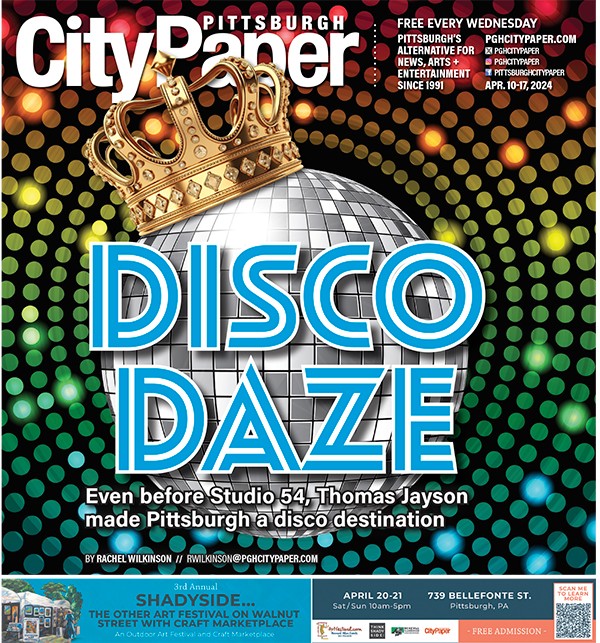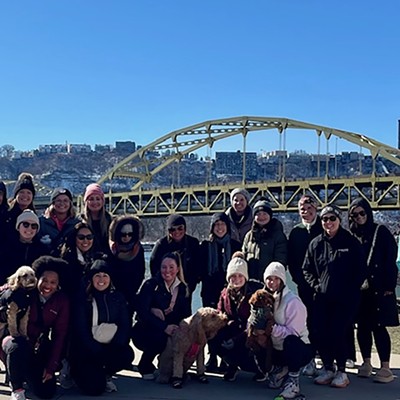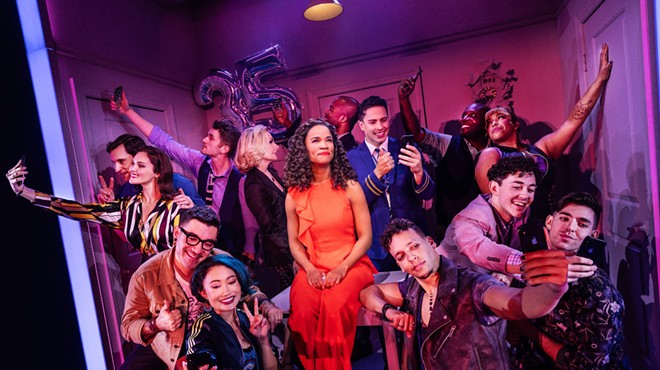A retrospective gives Alison Knowles her due
A Fluxus artist’s journey is mapped in beans and unconventional “books”
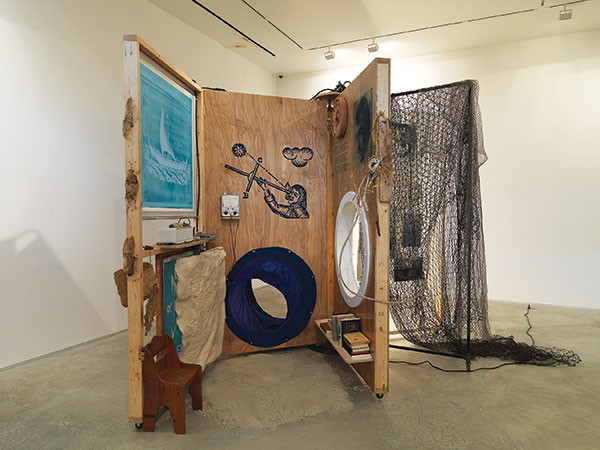
Alison Knowles’ “The Boat Book,” with its 8-foot-tall pages
ALISON KNOWLES
continues through Oct. 24. Carnegie Museum of Art, 4400 Forbes Ave., Oakland. 412-622-3131 or cmoa.org
Last year, in the New York Times Style Magazine, was a piece profiling “a very small sampling of the female artists now in their 70s, 80s and 90s we should have known about decades ago.” One of the 11 artists was Michelle Stuart, who explained that while she had recognition throughout her career, “you reach a certain point and there’s a glass ceiling,” but at her age “there’s a wonderful freedom in not having to prove anything.”
To anyone who follows contemporary art, many of the names were familiar. But given our short attention spans and an art world often obsessed with what’s new and what’s next, it’s nice to be reminded of women artists who have been producing amazing work year after year but who might no longer be on our radars.
Although she is not included on the magazine’s list, Alison Knowles is one such artist and is lately having a bit of resurgence. As one the first members of the seminal, cross-disciplinary experimental art movement Fluxus, and the only woman in the original group, her career as an artist and a poet has spanned five decades.
Those decades are covered in Alison Knowles, a mini survey in the Carnegie Museum of Art’s Forum Gallery. In a small space often given over to more au courant installations by younger artists, this exhibition feels rather curt and antiseptic. The ephemeral and interactive sociality of many of Knowles’ works, and the importance of such works to more recent developments in art history, warrant a more in-depth investigation.
Organized by Eric Crosby, the Richard Armstrong Curator of Modern and Contemporary Art, the intimate exhibition is intended as the first to cast “equal light” on Knowles’ full breadth of work across media. But while it does offer some key pieces, it provides very little opportunity for interaction or participation.
The only piece you are allowed to really interact with is “Bean Garden,” which is particularly popular with the toddler set, so if you want to try it you’ll have some stiff competition. Described as “an interactive sculpture and an experimental sound composition,” the piece is a large, shallow box filled with dried beans, with an amplifier beneath it. Knowles was originally interested in beans because of the sound they made when hitting a hard surface. But beans became a distinctive and continuous feature in her work, not least because they are a basic yet important staple worldwide.
In an innovative early work on display here, called “Bean Rolls,” Knowles placed some beans inside a square tin along with several tiny paper scrolls, each containing bean-related texts taken from diverse sources such as songs, recipes, stories, ads and science. “Bean Rolls” is a key piece here, as it unites a number of recurrent themes in Knowles’ work. As part of a Fluxkit, it is an example of the diverse output of Fluxus artists, which included event scores, performances, publications and multiples of works. When shaken, the tin becomes an instrument, or bean-turner; the scrolls make it a book; and the found phrases are experimental poems. Knowles also used “Bean Rolls” in participatory performances.
Other works integrate beans within handmade flax or cotton paper sculptures. These can make noise when turned, shaken or rubbed; however, while you can’t do this yourself at the Carnegie, you can ask a gallery facilitator to demonstrate.
“Celebration Red,” one of Knowles’ favorite event scores, was also interactive, but took place only on opening night at the Carnegie, back in May. Participants were invited to bring a red object, place it in a square of a temporary grid on the floor, and to take away an object if they liked it as a way to “celebrate every red thing.” The end result is now on display on a wall outside the entrance to the exhibition, a beautiful if static remnant.
The piece you’ll really want to touch, but can’t, is “The Boat Book,” an immersive 8-foot-tall sculpture with proportionate, movable wood-framed pages. Just as “Bean Rolls” is a book in a non-traditional form, so is this one. Inspired by her older brother, a fisherman on Long Island, this book, similar to earlier versions called “Big Book” and “The Book of Bean,” is intended to be physically and mentally navigated. As an assemblage that includes a bean turner, poetry, books, a soundtrack of Knowles reading nautical-related material, and (the potential) for interaction, it has all the non-hierarchical density of experience one would expect of Knowles.
While a traditional retrospective would have seemed more appropriate for Knowles’ seminal oeuvre, it’s possible that “The Boat Book” and key items compiled from Knowles’ own studio create just enough of a survey. After all, at this stage in her career, this pioneering artist certainly has nothing to prove.
To anyone who follows contemporary art, many of the names were familiar. But given our short attention spans and an art world often obsessed with what’s new and what’s next, it’s nice to be reminded of women artists who have been producing amazing work year after year but who might no longer be on our radars.
Although she is not included on the magazine’s list, Alison Knowles is one such artist and is lately having a bit of resurgence. As one the first members of the seminal, cross-disciplinary experimental art movement Fluxus, and the only woman in the original group, her career as an artist and a poet has spanned five decades.
Those decades are covered in Alison Knowles, a mini survey in the Carnegie Museum of Art’s Forum Gallery. In a small space often given over to more au courant installations by younger artists, this exhibition feels rather curt and antiseptic. The ephemeral and interactive sociality of many of Knowles’ works, and the importance of such works to more recent developments in art history, warrant a more in-depth investigation.
Organized by Eric Crosby, the Richard Armstrong Curator of Modern and Contemporary Art, the intimate exhibition is intended as the first to cast “equal light” on Knowles’ full breadth of work across media. But while it does offer some key pieces, it provides very little opportunity for interaction or participation.
The only piece you are allowed to really interact with is “Bean Garden,” which is particularly popular with the toddler set, so if you want to try it you’ll have some stiff competition. Described as “an interactive sculpture and an experimental sound composition,” the piece is a large, shallow box filled with dried beans, with an amplifier beneath it. Knowles was originally interested in beans because of the sound they made when hitting a hard surface. But beans became a distinctive and continuous feature in her work, not least because they are a basic yet important staple worldwide.
In an innovative early work on display here, called “Bean Rolls,” Knowles placed some beans inside a square tin along with several tiny paper scrolls, each containing bean-related texts taken from diverse sources such as songs, recipes, stories, ads and science. “Bean Rolls” is a key piece here, as it unites a number of recurrent themes in Knowles’ work. As part of a Fluxkit, it is an example of the diverse output of Fluxus artists, which included event scores, performances, publications and multiples of works. When shaken, the tin becomes an instrument, or bean-turner; the scrolls make it a book; and the found phrases are experimental poems. Knowles also used “Bean Rolls” in participatory performances.
Other works integrate beans within handmade flax or cotton paper sculptures. These can make noise when turned, shaken or rubbed; however, while you can’t do this yourself at the Carnegie, you can ask a gallery facilitator to demonstrate.
“Celebration Red,” one of Knowles’ favorite event scores, was also interactive, but took place only on opening night at the Carnegie, back in May. Participants were invited to bring a red object, place it in a square of a temporary grid on the floor, and to take away an object if they liked it as a way to “celebrate every red thing.” The end result is now on display on a wall outside the entrance to the exhibition, a beautiful if static remnant.
The piece you’ll really want to touch, but can’t, is “The Boat Book,” an immersive 8-foot-tall sculpture with proportionate, movable wood-framed pages. Just as “Bean Rolls” is a book in a non-traditional form, so is this one. Inspired by her older brother, a fisherman on Long Island, this book, similar to earlier versions called “Big Book” and “The Book of Bean,” is intended to be physically and mentally navigated. As an assemblage that includes a bean turner, poetry, books, a soundtrack of Knowles reading nautical-related material, and (the potential) for interaction, it has all the non-hierarchical density of experience one would expect of Knowles.
While a traditional retrospective would have seemed more appropriate for Knowles’ seminal oeuvre, it’s possible that “The Boat Book” and key items compiled from Knowles’ own studio create just enough of a survey. After all, at this stage in her career, this pioneering artist certainly has nothing to prove.



